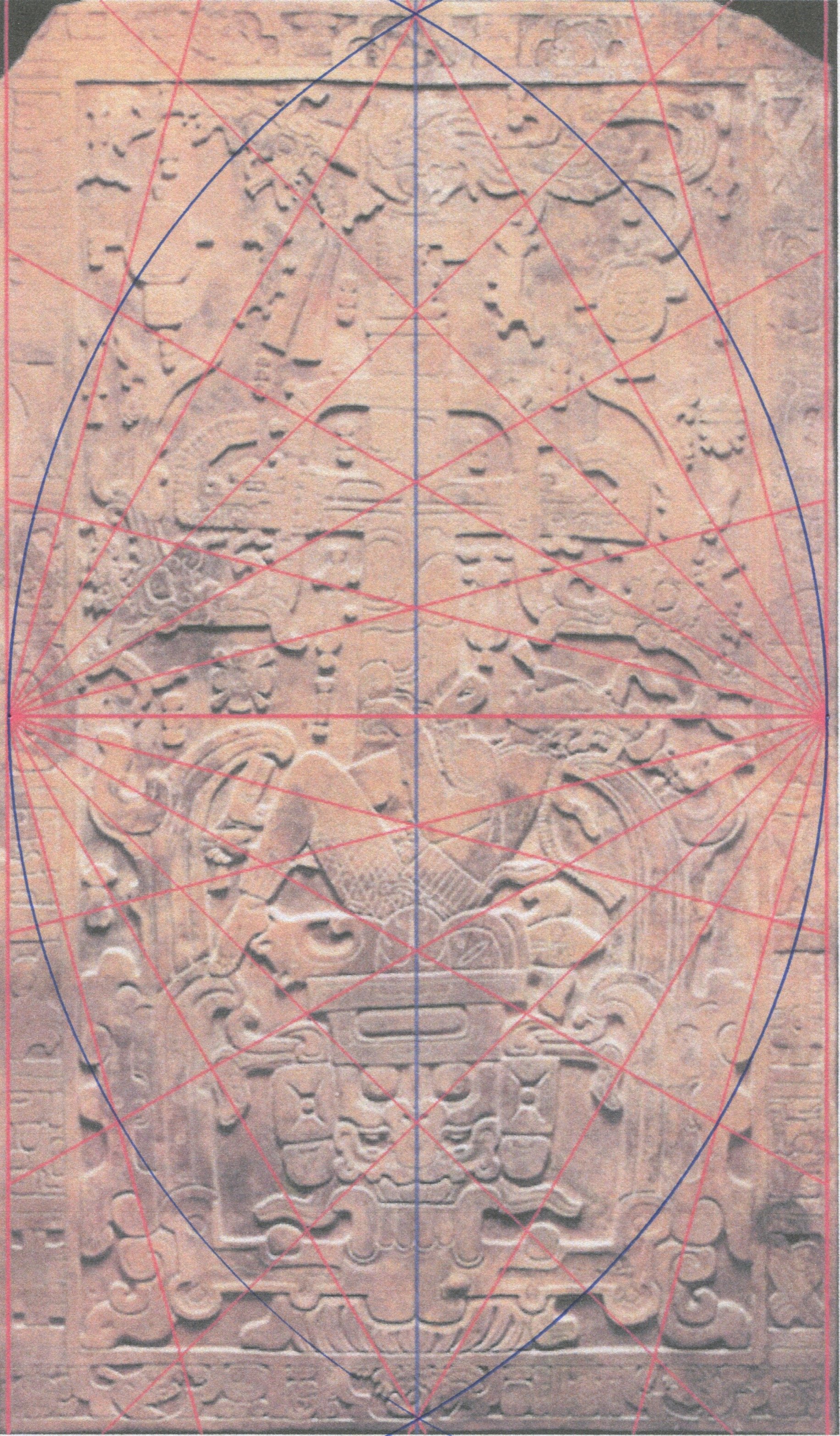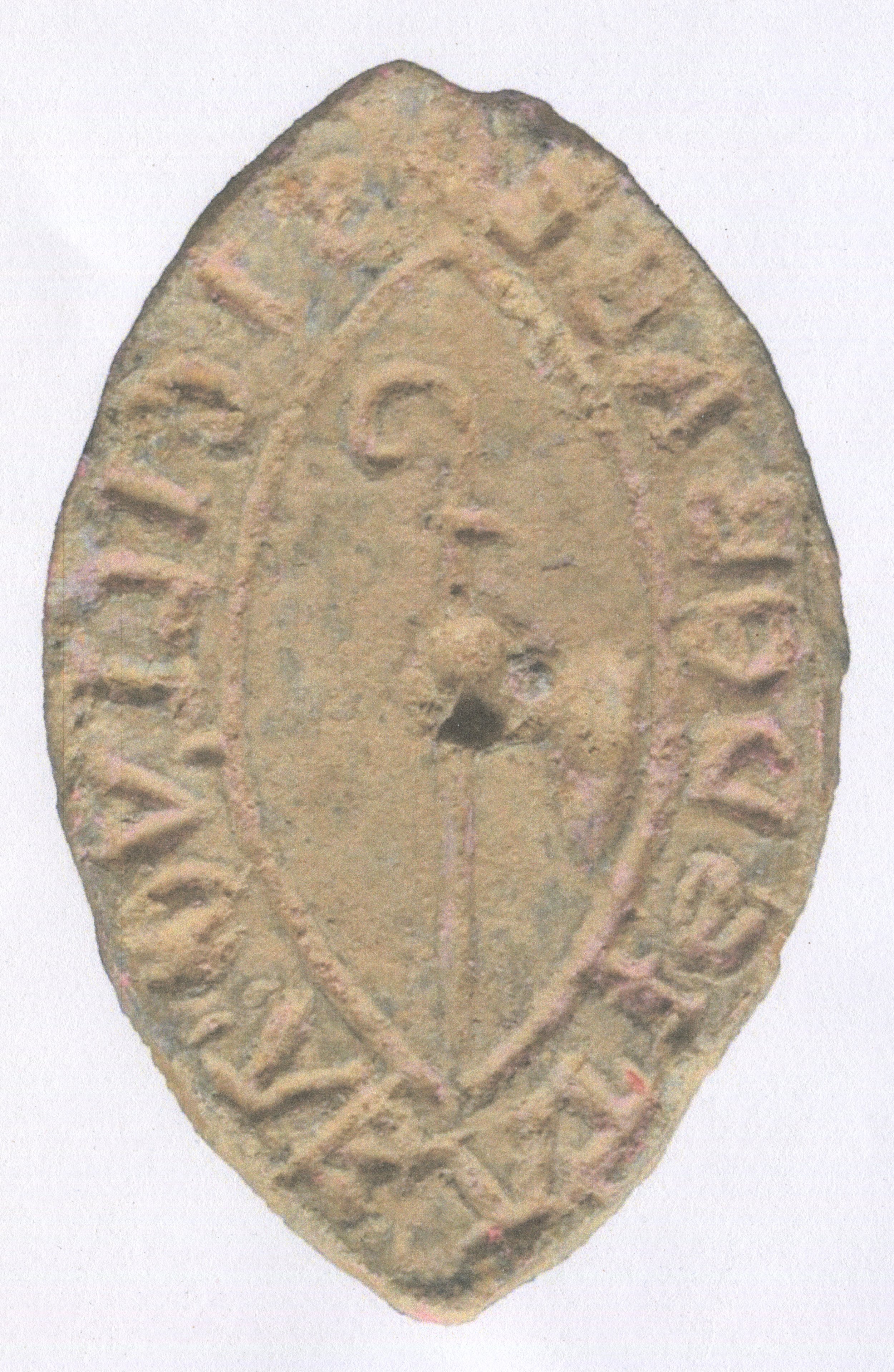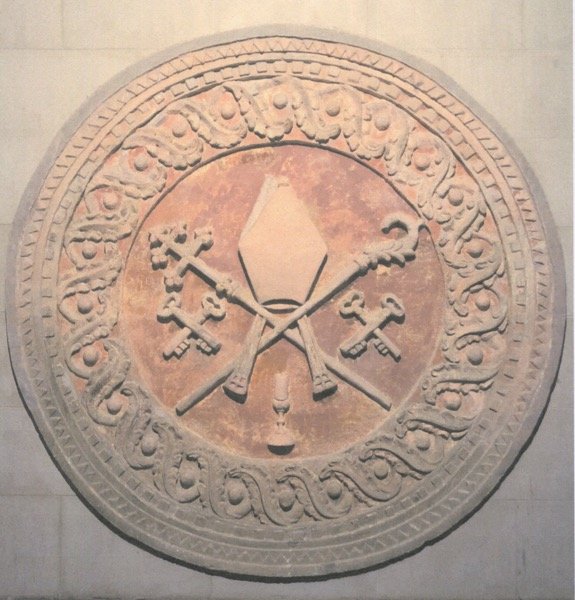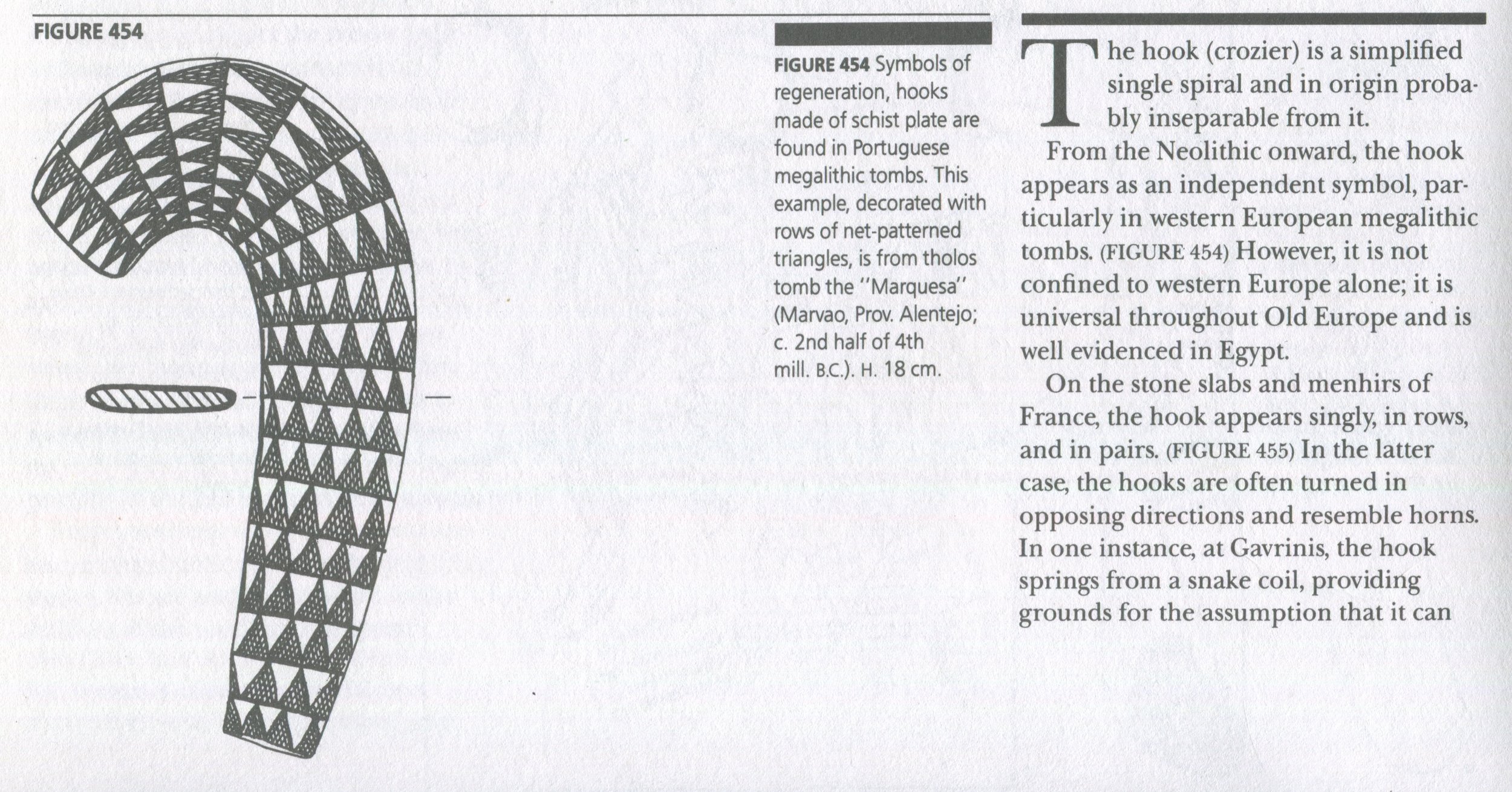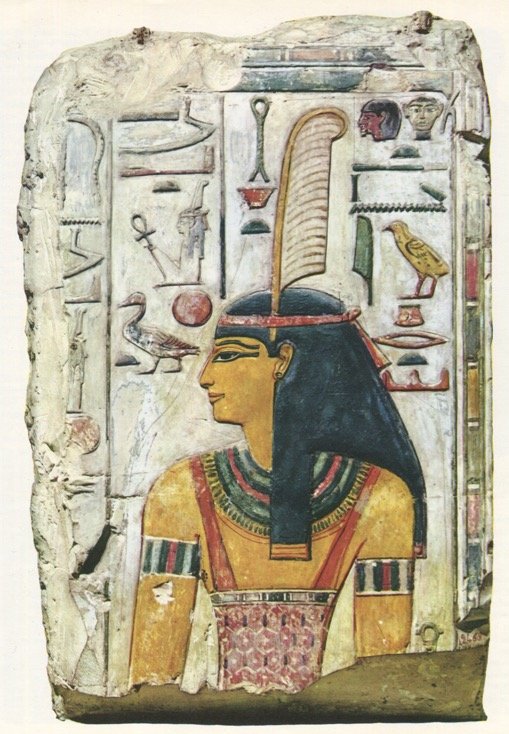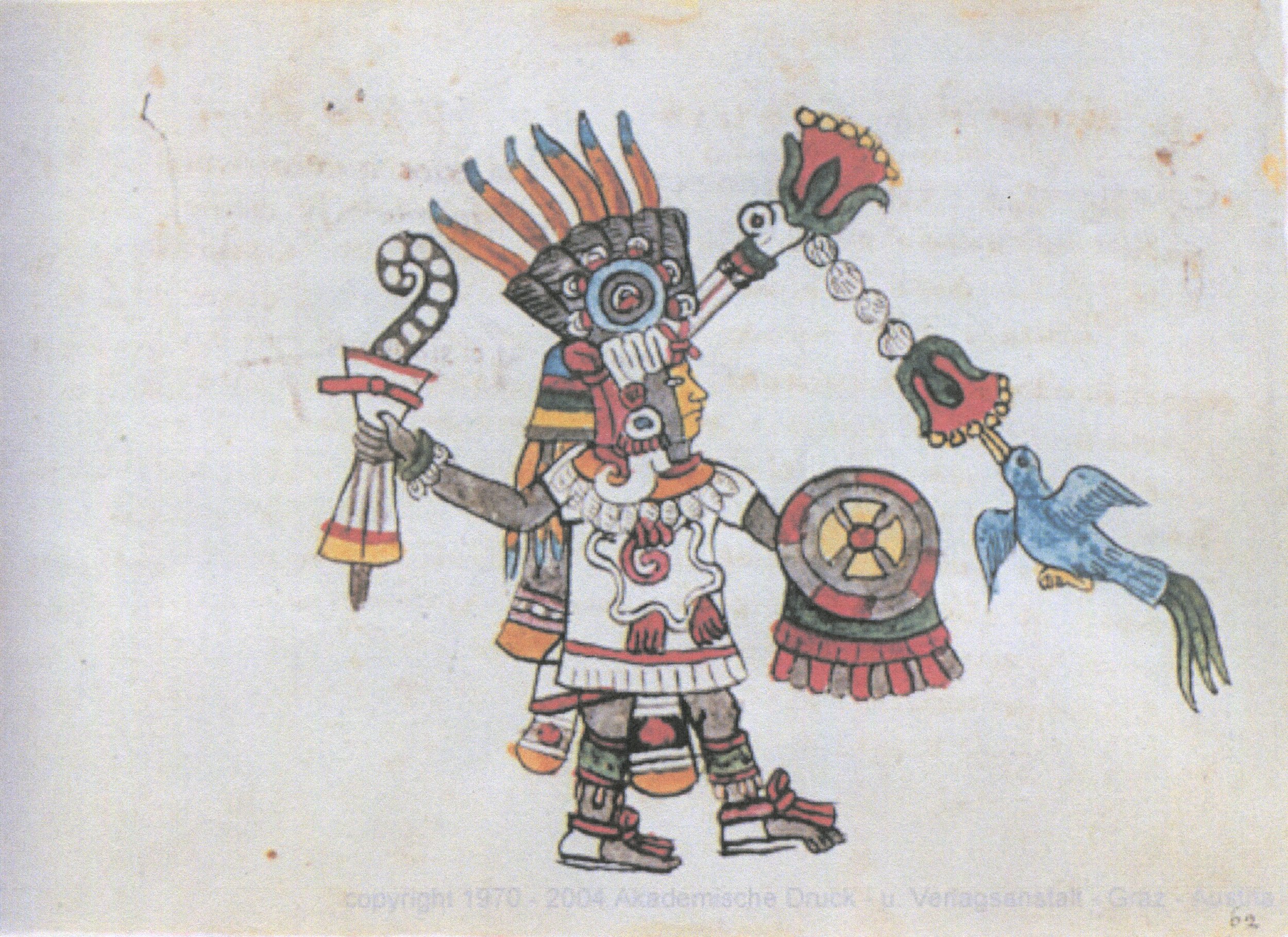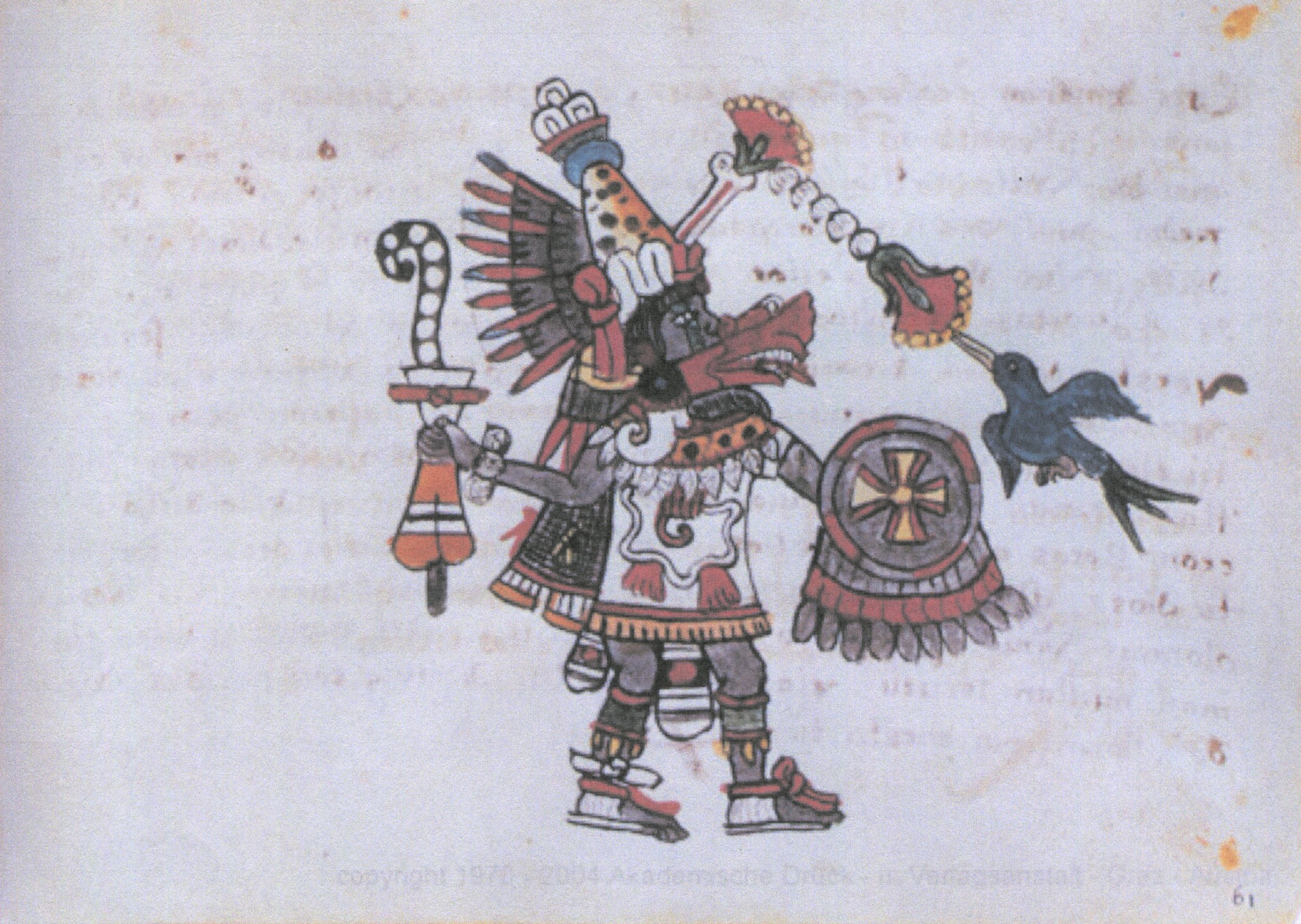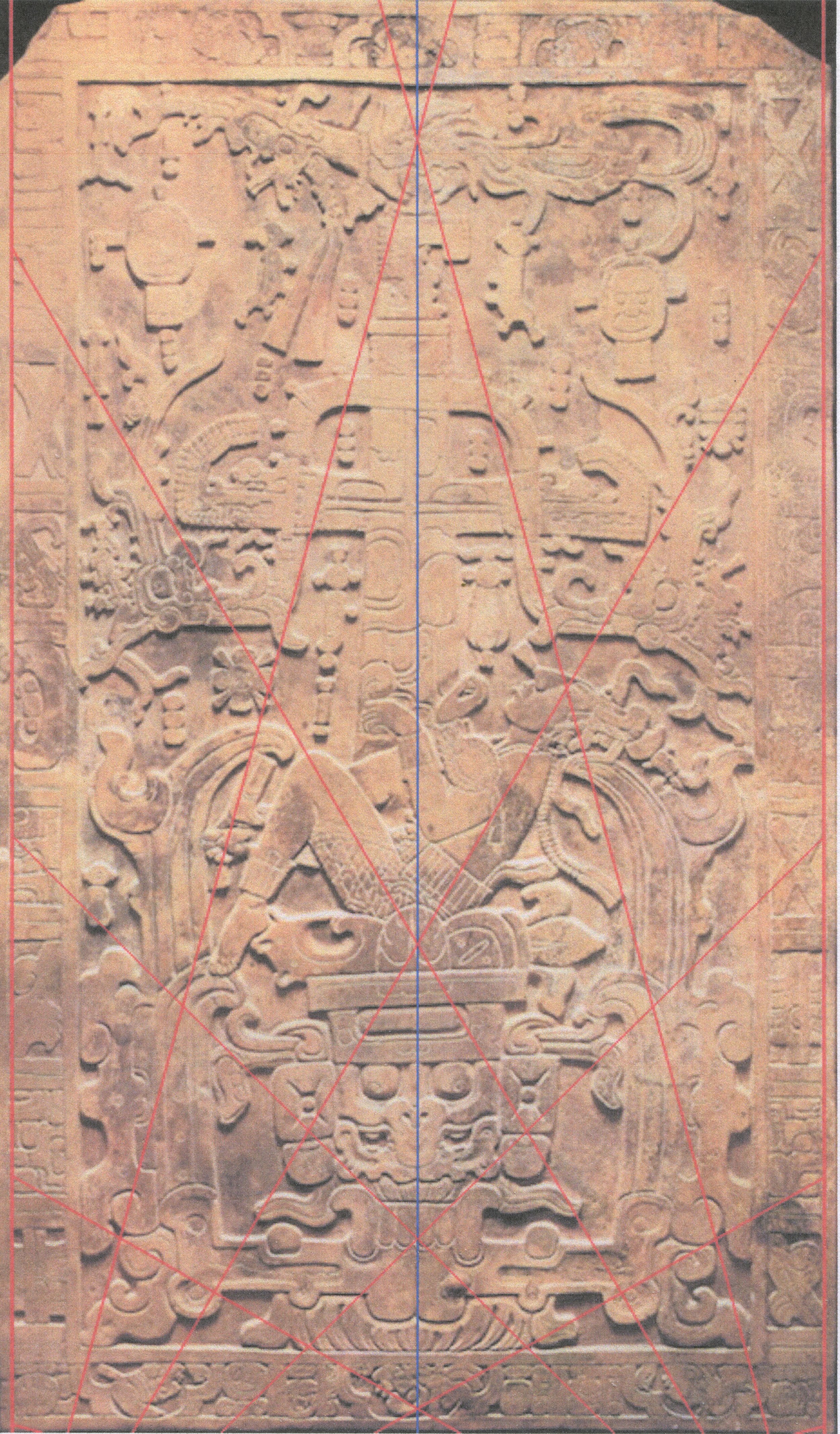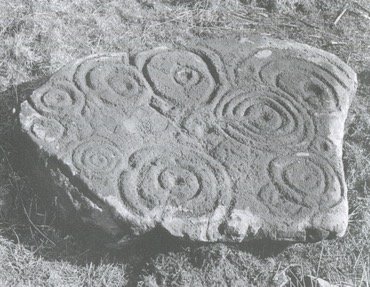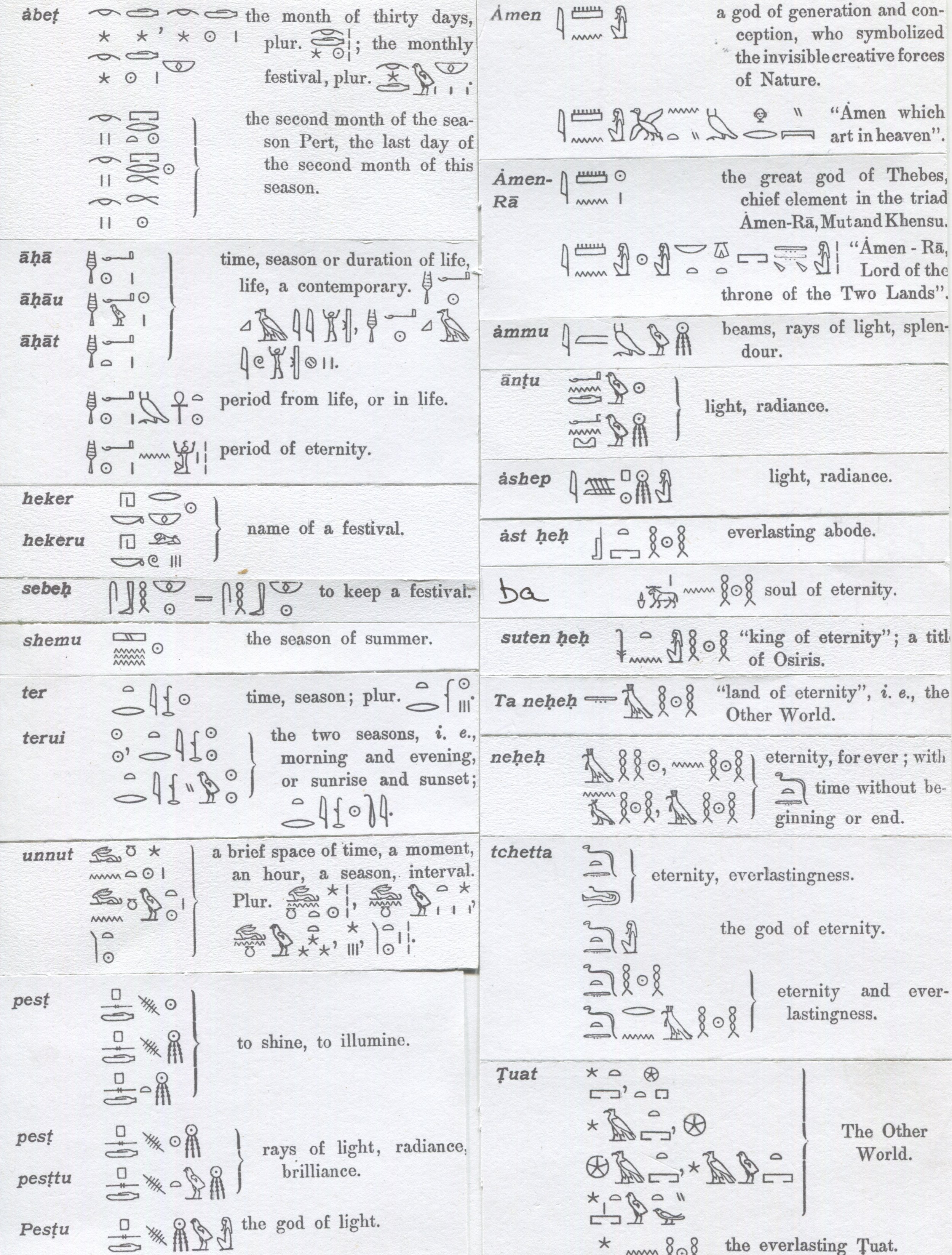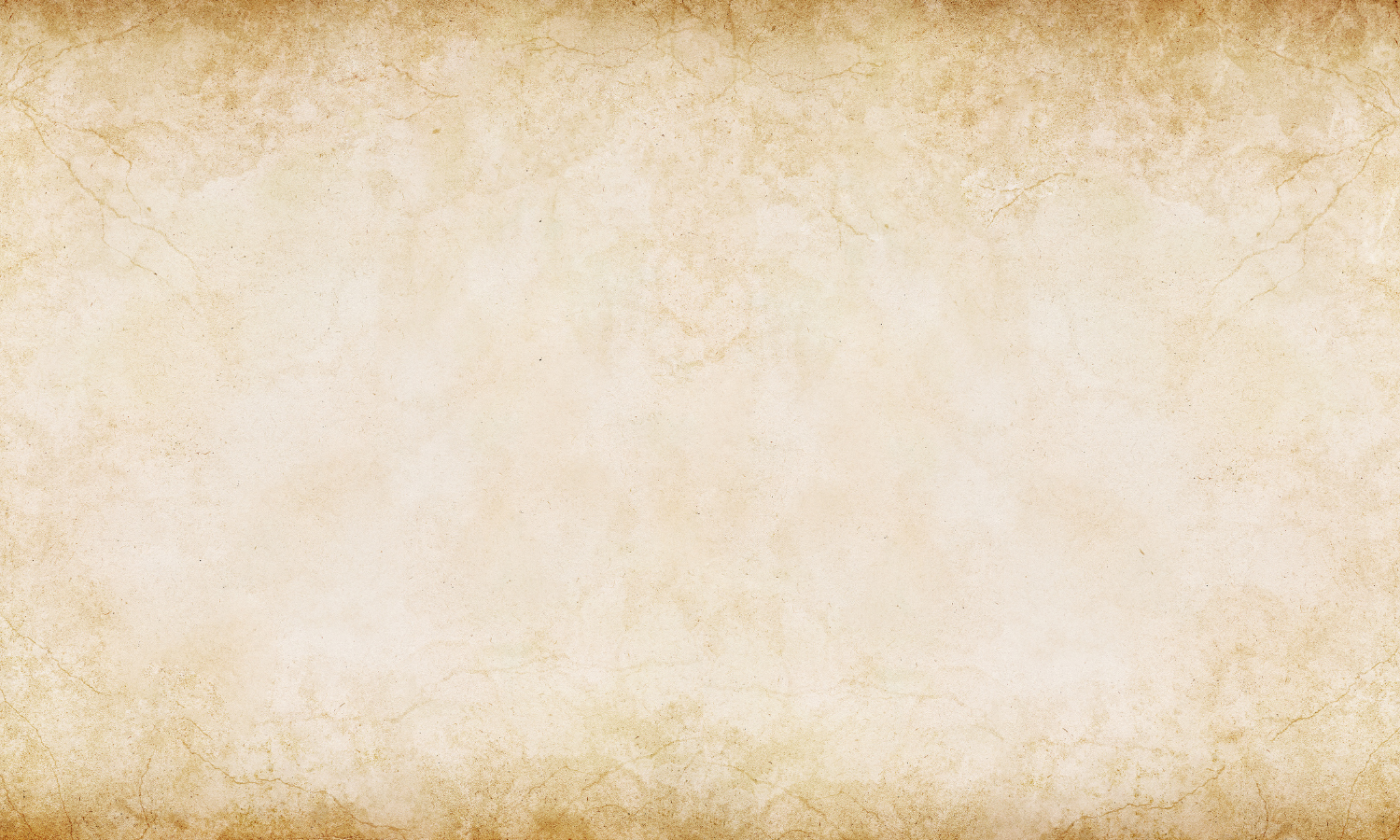
ART MOTIFS
114-130
SQUARE ROOT OF THREE, THE HOOK, AND THE CIRCUMPUNCT
As discussed in Portal Grid, the Square Root of Three is not only the diagonal of a cube but is also one of several mathematical constants found in all circles. When a hexagram is constructed inside of a hexagon three rectangles are formed that contain another mathematical constant, the equilateral triangle. The length of the long sides of these rectangles is always a multiple of the Square Root of Three. The center of this rectangle where the diagonals that form the equilateral triangles cross can also be thought of as the Square Root of Three diagonal of a cube or the diameter of a sphere, with the latter suggesting the axis of the planet. Fig.114 below explores this possibility.
Because of its simplicity in execution, the hook is most probably the oldest recurring art motif on the planet found drawn on cave walls long long ago to shower curtains, dishes, and wall paper today. Depending on context, this mythological symbol probably began as an encoded representation of the earth as it rotates on its tilted axis and ‘hooks’, or fixes the locations of the sun on the horizon, particularly on the solstices and equinoxes. Fig.131 shows a Chinese Winged Dragon clutching a sphere with three claws on top that symbolize the solstices and equinoxes, with a single claw below possibly symbolizing the earth’s tilted polar axis. There are several variations of the hook motif whose particular context probably reference a common origin. There is the hook with just a simple single ‘hook’ and the spiral hook found at Newgrange. The shepherd’s crook ends with an outward bend that possibly symbolizes earth’s rotation. Both the crozier and the shepherd’s crook held as staffs likely symbolize earth’s axis, maybe even earth’s axis as the Square Root of Three and or the ‘tree in the center of the garden’. The simple hook is found at Teotihuacan and is often found paired with a square hook on Classical Maya ceramics. The square hook very likely symbolizes earth’s rotation and when paired with the simpler round hook that symbolizes the axial tilt, these features of the earth’s celestial mechanics became deified, Quetzalcoatl, the Feathered Serpent, and mythologized, ‘The Hero Twins’.
The circumpunct, a circle with a dot in the center, depending on context, could symbolize anything from the circle’s geometry to the pole star to earth’s orbit around the sun or its rotation around its polar axis. This motif is found in Old Europe as early as 4500 BCE. It is also found in the Egyptian Book of the Dead c.1325 BCE and on Pacal’s sarcophagus lid c.675CE.
Fig.114 Pacal’s Sarcophagus Lid c.675 CE Palenque of Lacamha
Fig. 114 Pacal’s Sarcophagus Lid c.675 CE Palenque of Lacamha
The ascension of Kenich Janab Pacal of Lacamha
“On the north and south ends, three individuals emerge from quatrefoil shapes. The same three people reappear on the limestone legs of the sarcophagus. Glyph texts name all three and give their ranks. A lord named Chak-Kan appears in the center of both ends and on the northwest leg. Yuk-Sahal occupies the western sides and the northeast leg, and Mut looks out from the eastern sides and the southeast leg. Chak-Kan and Mut were Ah K’ul Hun, “Keeper of the Holy Books,” while Yuk had the rank of sahal, a kind of court official.” (The Code of Kings, Linda Schele/Peter Mathews 1998, Scribner, p.111)
The Temple of the Inscriptions and presumably Pacal’s sarcophagus is aligned approximately 15 degrees east of north, similar to Teotihuacan’s Street of the Dead. Pacal, or his afterlife spirit, is seen adjusting his ascent using the pole star Heart of Sky, Chak-Kan’s earspool, to guide him. (Fig.128) The narrative here appears to be an attempt to correct for Pacal’s sarcophagus actual physical alignment. What were in the Holy Books? It is possible that Chak-Kan and Mut represent earth’s celestial equator, the Quetzal Serpent, with Yuk representing Sovereign, the plane of the ecliptic. These three men designed and oversaw the carving of this truly unique and exquisite sarcophagus cover fit for a king.
As demonstrated using the Portal Grid software the dimensions of this rectangular slab of limestone were derived from the circle’s geometry, specifically the hexagon and Six-Pointed Star. The ends of the arcs that form the ellipse meet where the 30-degree pairs of rays projected from above and below meet the centerline where it intersects with the side of the hexagon. This ellipse is known as the Vesica Piscis with its centerline equaling the Square Root of Three, same as the diagonal of a cube. (Fig.116) The centerline, the y-axis passes through Pacal’s left wrist with the x-axis passing through both his right and left wrists.
Pacal wears a beaded net skirt designed as a cube with the upper chord missing. The diagonal of a cube, represented by the center bead, is the Square Root of Three. The missing chord along with the broken off corners of the lid very likely allow for the spirit to exit the geometry, similar to a Navajo rug. This is the only example I know of that conflates the diagonal of a cube, the diameter of a sphere as earth’s axis into one and the same y-axis that somehow links to the idea of eternity through the Square Root of Three mathematics and the pole star. Pacal seems to be grasping or holding onto earth’s polar axis with his left hand or wrist while making adjustments to the axial tilt of earth’s celestial equator by ‘pinching’ or ‘turning’ something just below the circumpunct with three feathers motif with the fingers of his right hand while pushing on the axis with his palm which is conspicuously carved in a very straight line that is aligned at a 90-degree angle across the centerline with his other wrist. It appears Pacal may be attempting to replicate earth’s celestial mechanics on an equinox when earth’s tilted axis and the plane of the ecliptic come into alignment as the dawn sun rising due east, or setting due west, along with the pole star aligned to true north and the observer or any location on the planet’s surface become triangulated in space and time. A similar arrangement can be seen in the triangulation of Izapa, Copan, and Palenque. Copan is located at latitude 14.50n and lies nearly due east of Izapa located at 14.41n/92.180w and Palenque located due north of Izapa at longitude 92.02w.
The ‘rectangular portal’ Pacal seems to be ascending from is sourced from the same Six-Pointed Star Square Root of Three geometry as the outer dimensions of the lid described above. (See Portal Grid slideshow). The ‘hook’ motif (Fig.123) of which there are many here, symbolizes earth’s celestial mechanics and particularly its axial tilt and the ‘hacking’ or marking of time as earth’s rotation and tilted polar axis ‘hook’ the sun’s location on the horizon at sunrise and sunset and depending on context, are symbolically synonymous with the solstices symbolized here by the square hooks at either end of the horizontal crosspiece similar to the Tablet of The Cross in Fig.98. The bird at the top faces to the left similar to The Resurrection of The Maize God on The Tablet of The Foliated Cross in Fig.99. Interesting to note that Pacal was born March 23, 803 CE on or just after the Vernal Equinox having been conceived nine months earlier on or near the Summer Solstice in 802 CE and dying on August 28, 683.
The lower pair of nearly vertical hooks along with the horizontal motif at the bottom they are seemingly attached to represent the plane of the ecliptic, earth’s orbital path around the sun. Note Pacal’s left foot resting on the left, western hook. The upper pair of hooks represents earth’s rotation on its tilted polar axis, the celestial equator. Pacal’s ascent involves navigating the timing of these events. Note Pacal’s left knee nearly touching the upper left western hook. Pacal is sitting on a cushion or throne that along with the ‘earth monster’ below is shown slightly tilted to the left, something intentional and possibly suggesting the need for an alignment. The horizontal crosspiece above with the square hooks, likely representing the horizon, is tilted the opposite way similar to the beam of the scales in the Egyptian Papyrus of Ani. (See Portal Grid slideshow) This also seems deliberate. The tilted ‘earth monster’ with two ‘hook’ eyes, each one symbolizing earth’s axial tilt, appears to be some sort of primal artistic deification of the twin roles the tilted axis plays on an equinox when earth’s tilted celestial equator and its tilted axis align with the plane of the ecliptic. There may be a male sexual energy component assisting or driving Pacal’s ascension. It appears that at the bottom of the ‘earth monster’ motif is a pair of testicles placed level with the horizontal base of the ‘portal’ with what appears to be the tip of a penis that Pacal sits on at the top. The idea here is that the penis is synonymous with earth’s tilted axis, that which brings life. Min, (men) the Egyptian god of fertility known for his erection along with the Paleolithic Cave art at Lascaux (Figs.145-149) and the Vulture Stone (Fig.20 very bottom right) at Gobekli Tepe all seem to share a similar ancient encoding of earth’s celestial mechanics.
The lid has horizontal borders at the top and bottom with nine glyphs, or stages of ascension arranged vertically between them for a total of eleven separate narratives or actions. Taking the total 11 and dividing by 9 (32) results in 1.2222222, a very interesting number that not only lies either side of the number 10, the first two digit number, 1.1111111(10/9) x 1.1(11/10) = 1.2222222 but it is also something of a go between Pi and the Portal Formula.
3.1428471/1.2222222=2.571428, 4/2.5714285=1.5555555 (See Portal Gematria)
As per Portal Gematria; Pacal 33/30 = 1.1 Pakal 41/46 = .8913043
The “Holy Books” at the very least contained an understanding of the circle’s geometry, the Square Root of Three and the knowledge of earth’s celestial mechanics on the equinoxes including the pole star Heart of Sky. Was this Old World Feathered Serpent body of knowledge learned locally or was it imported? The association of the Six-Pointed Star’s Square Root of Three geometry with the afterlife is also found in the Egyptian Book of The Dead. (Fig.117&Fig.118)
What Chak-Kan, Mut, and Yuk knew and how they knew it when they designed this incredible work of art that really has no parallel in the Old World that I know of begs the question, what type or level of consciousness did these scribes possess when they created this uniquely shamanistic intellectual masterpiece? (See the slideshow)

Fig.115 Vesica Piscis/Cube/Square Root of Three
Fig.116 Snowflake/Six-Pointed Star
Fig. 115 Vesica Piscis/Cube/Square Root of Three
Fig. 116 Snowflake/Six-Pointed Star

Fig.117 Osiris Chamber/Papyrus of Hunefer 18 Dynasty c. 1350 BCE Egypt
Fig. 117 Osiris Chamber/Papyrus of Hunefer 18 Dynasty c. 1350 BCE Egypt
Portal Grid software aligns the Six-Pointed Star and the Square Root of Three rectangle with Osiris’ chamber. Compare the chamber scene to one similar in Fig.112.

Fig.118 Osiris Chamber/Papyrus of Ani 18th Dynasty c. 1325 BCE Egypt
Fig. 118 Osiris Chamber/Papyrus of Ani 18th Dynasty c. 1325 BCE Egypt
Portal Grid software aligns the Six-Pointed Star and the Square Root of Three rectangle inside Osiris’ chamber. Compare the chamber scene to one similar in Fig.112.

Fig.119 Double ellipse with hook staff
Fig.120 Christ the Shepherd
Fig. 119 Double ellipse with hook staff
This artifact links the hooked staff, similar to the Shepard’s Crook, to the ellipse and possibly to earth’s polar axis. (See Fig.114
Fig. 120 Christ the Shepherd
Christ holds the hooked Shepherd’s Crook linking the hook motif to the Vernal Equinox and earth’s tilted polar axis.

Fig.121 Christ/Ellipse/Crossed Poles
Fig.122 Philippine Seal
Fig. 121 Christ/Ellipse/Crossed Poles
This image links Christ to the ellipse that, depending on context, typically symbolizes the circle’s geometry, the Square Root of Three and possibly earth’s tilted polar axis. (Fig.115) The crossed poles shown here at right angles to each other symbolically mimic earth’s celestial equator, its rotation and axial tilt. The vertical pole Jesus is ‘suspended’ on shown slightly off center to the ellipse likely represents The Square Root of Three and or earth’s polar axis on the Vernal Equinox suggesting.
Fig. 122 Philippine Seal
The crossed staffs on this round seal feature a crozier style shepherd’s crook symbolizing earth’s axial tilt crossing over the other staff that represents earth’s celestial equator similar to the Mayan kin-cross glyph. (Fig.120) The three decorative rings encode earth’s celestial mechanics. The outer ring symbolizes earth’s orbit around the sun, the plane of the ecliptic. The second ring in symbolizes earth’s rotation and the inner serpent like ring with the hemispherical dots, which the shepherd’s crook just touches, symbolizes earth’s axial tilt. Compare the alternating, overlapping crossed pairs of keys with Figs.43&48.

Fig.123 Hook Motif c. 5th century BCE Old Europe
Fig.124 Feather of Truth Egypt
Fig. 123 Hook Motif c. 5th century BCE Old Europe
Fig. 124 Feather of Truth Egypt
Isis is shown facing to the left, wearing a hexagon-patterned dress, and a ‘Feather of Truth’ tucked vertically into her headband. The Feather of Truth symbolizes earth’s rotation and axial tilt and quite possibly also The Square Root of Three. It is composed of the ‘hook’ motif that symbolizes earth’s axial tilt with the feathers symbolizing earth’s rotation. Her headband symbolizes either earth’s rotation or its orbit around the sun with the tail of the headband shown hanging down at the celestial equator angle. The hexagons imply the circle’s geometry with the dots possibly symbolizing the diagonal of a cube, the Square Root of Three. (Fig.115)

Fig.125 Quetzalcoatl Codex Magliabechiano Mesoamerica
Fig.126 Quetzalcoatl Codex Magliabechiano
Fig. 125 Quetzalcoatl Codex Magliabechiano Mesoamerica
This Aztec Quetzalcoatl, facing to the right, wields a double-hook motif with a bi-color handle and carries a round shield with a bi-color border with bi-color feathers. His arm and legs are also the same two colors, all in all suggesting earth’s day and night rotation on its tilted axis.
Fig. 126 Quetzalcoatl Codex Magliabechiano
This Aztec Quetzalcoatl, facing to the right, wields the hook motif tilted at the axial-tilt angle and carries a shield decorated to symbolize the earth’s orbit around the sun, the plane of the ecliptic. The cross in the center of the shield and the four alternating colors ‘around’ the outer border suggest the ‘four stations of the sun’, the solstices and the equinoxes. His bi-color face, suggests rotation, and the concentric circle motif with the red semi-circle in his headdress represents earth’s celestial mechanics on an equinox. (Fig.111)

Fig.127 Quetzalcoatl Codex Magliabechiano
Fig.128 Pacal’s Sarcophagus Lid/15-degree alignment c.675 CE Palenque
Fig. 127 Quetzalcoatl Codex Magliabechiano
This Aztec Quetzalcoatl, facing to the right, wields a somewhat vertical hook motif and carries a shield quite similar to the one in Fig.125. There is a crossed-bands motif in his cape with one band in the axial tilt angle overlapping the other band together with the shield decoration imply the relationship between earth’s axis and its orbit around the sun, essentially the seasons.
Fig. 128 Pacal’s Sarcophagus Lid/15-degree alignment c.675 CE Palenque
Portal Grid software aligns Pacal’s eye to the circumpunct pole star ear spool worn by Chak-Kan that he uses to guide his ascension. The 15-degree angle may reference his adjusting his ascension to earth’s rotation. Earth rotates 15 degrees every 60 minutes, the only planet in this solar system to do so. (Fig.130) None of the other Portal Grid angles align his eye to the ear spool. The 15-degree angle, being outside of the Square Root of Three geometry, possibly symbolizes his last adjustment and the successful completion of his ascent.

Fig.129 Concentric Circles Irish Neolithic c. 4th century BCE
Fig.130 Egyptian circumpunct hieroglyphics
Fig. 129 Concentric Circles Irish Neolithic c. 4th century BCE
It is very likely that these concentric circle circumpunct like motifs symbolize various ritual encodings or cultural interpretations of earth’s celestial mechanics. Interesting to note that the rings were made in a rounded hemispherical shape that suggests the rotating earth orbiting the sun. Whatever they represent, filled with water they will not only reflect the sun’s light but also the light of the moon, especially a full moon.
Fig. 130 Egyptian circumpunct hieroglyphics
Though there are no glyphs that mention a pole star per se, there are several that mention the seasons suggesting earth’s axial tilt and several others that mention eternity that together seem to imply a connection between earth’s tilted polar axis and time, possibly a reference to the pole star and the Precession of The Equinoxes .
